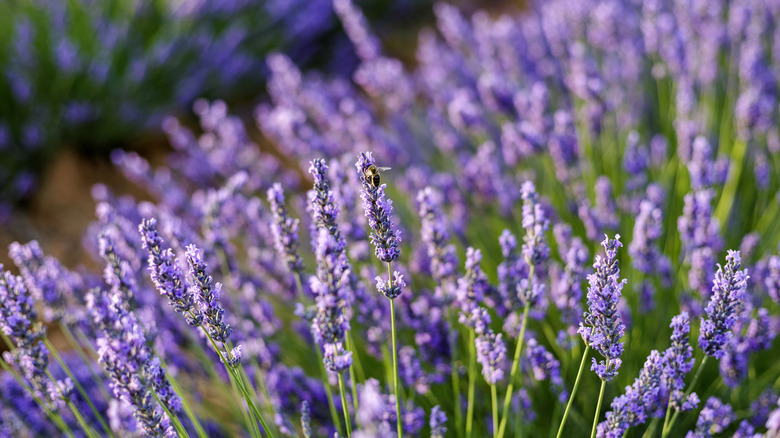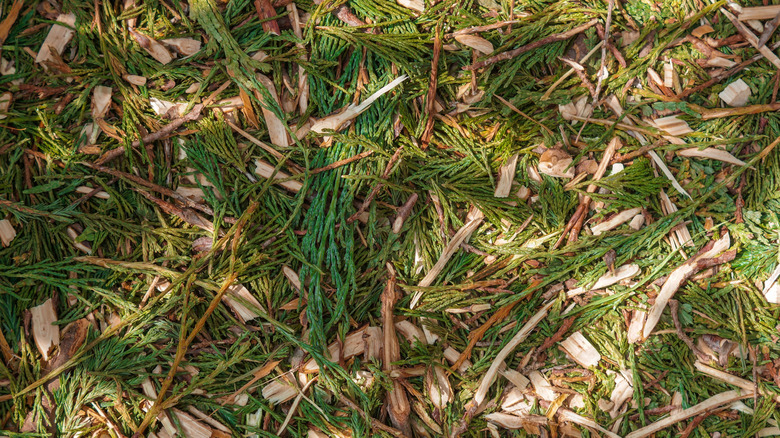The Easy Soil Trick That Will Keep Your Lavender Plants Happy And Healthy
There are many good reasons to use mulch in your garden: Properly done, it can help shield the soil's temperature from extreme heat or cold, reduce the frequency you need to water the plants, and even keep away pests that could harm them. But if you're growing the beautiful, fragrant lavender (Lavandula spp.), mulching has to be a careful operation. By definition, mulching involves covering the soil around it, but too thick a material can hold in too much moisture, getting in the way of lavender's need to have dry roots as it would in its native Mediterranean climate.
Lavender is a perennial that grows well in USDA Hardiness Zones 5 through 9. It favors well-drained soil, but this doesn't mean you have to skip mulching altogether. Your lavender will be happy and healthy with an easy soil trick: Use pine needles or nut shells to create a breathable mulch for them.
Done right, mulching offers protection to lavender in the winter, for example. But you'll want to avoid common mulch ingredients like wood chips, which can increase the risk of fungal pathogens, or straw and compost, which can lock in moisture that may rot lavender crowns. Instead, non-moisture-retentive ingredients found in nature are some of the best ingredients to use in a DIY mulch.
Where and how to mulch lavender with pine needles or nut shells
Before you gather the ingredients for this soil trick, do some research to make sure mulching and using this material is the right choice for lavender in your part of the world. Mulching isn't recommended if you're growing it somewhere that gets more than 18 to 20 inches of precipitation in a year. There's too great a risk of all this moisture getting trapped. Dry conditions also mean you should avoid dried-out pine needles, which can catch fire. Think twice about using fallen pine needles as mulch for the lavender if you're in a place where forest fires are common.
As long as the conditions are right, gather the pine needles or nut shells (harvest shells of a nut that's locally grown in your area, or if there are pine trees nearby, you can score free mulch), and spread them in an even layer that's between 1 and 2 inches thick. As you apply the mulch, avoid placing it around the stems, especially the place where the stems meet the roots, known as the crown. This is where you'll want to allow space to let air flow freely. Once you're done, monitor the mulch. Because pine needles and nut shells break down naturally, they'll need to be replaced more often than other ingredients.
There are some variations on this trick since its goal is to not overwhelm lavender with water. Gardeners also incorporate small rocks and pea gravel for the same purpose. This use of pea gravel or crushed stone adds a visually appealing touch to the garden due to its contrasting color. In the winter, when they need extra shielding, you can incorporate whole evergreen boughs — not just the needles — into your lavender mulching routine.

